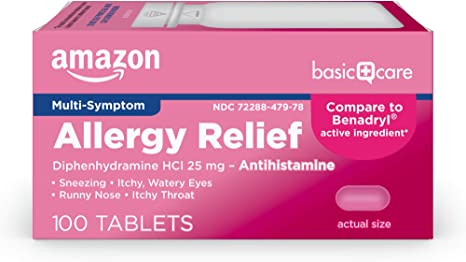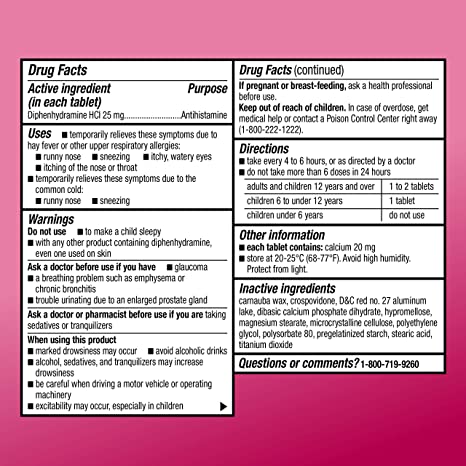
Helping Dog Anxiety
Do you have an anxious dog that suffers from anxiety? If so, you know how frustrating it can be. Dogs with anxiety can be destructive, bark incessantly, and generally make life difficult for everyone in the household. The good news is that there is one secret weapon that can help conquer dog anxiety: Benadryl.
In this blog post, we will discuss the science behind Benadryl for dogs and how it can help alleviate anxious behavior. We will also provide dosage instructions and tips on how to safely give your dog Benadryl.
Benadryl for dog anxiety?
Is Benadryl for dog anxiety effective? This is a question that many pet owners ask, especially those who have dogs who suffer from separation anxiety or are scared of thunderstorms. Benadryl is an antihistamine that can be used to treat allergies in humans and animals. It works by blocking the action of histamine, which is a substance that the body releases in response to an allergic reaction. While Benadryl is not specifically approved for use in dogs, it is often used off-label to treat various conditions, including anxiety. Pet owners should always consult with their veterinarians before giving their dogs any medication, as Benadryl can have side effects in some dogs. When used properly, however, Benadryl can be an effective way to help reduce anxiety in dogs.
Benadryl for dogs and dog owners..
Benadryl is a medication that is most commonly used to treat allergies in humans, but it can also be used to treat anxiety in dogs. Benadryl works by blocking histamines, which are the chemicals that cause allergic reactions. When given to anxious dogs, Benadryl will help to calm them down and make them feel more relaxed.
In most cases, the recommended dosage of Benadryl for dogs is 1mg per pound of body weight. However, it is always best to consult with a veterinarian before giving any medication to your dog. With proper dosage, Benadryl can be an effective way to relieve anxiety in dogs.
Allergy Symptoms
Allergy symptoms can be frustrating and even painful. They can range from a simple itch to difficulty breathing. If you have allergies, you're not alone. In fact, allergies are one of the most common chronic conditions in the United States. The good news is that there are ways to manage your symptoms and keep them under control.
One way to do this is to take Benadryl for dog anxiety. Benadryl is an antihistamine that can help to relieve allergy symptoms. It works by blocking histamine, a substance that your body produces in response to an allergy trigger. By blocking histamine, Benadryl can help to reduce itching, sneezing, and watery eyes. Additionally, Benadryl
can also help to decrease swelling and redness. If you're looking for relief from your allergy symptoms, Benadryl may be worth trying.
How do we pick the Best Choices?
We read through thousands of reviews on Amazon to find the Best Choice for pet parents out there.
We scoured online retailers' websites, as well as customer feedback from across social media platforms to identify which product Is the Best Choice.
Best Choice
Amazon Basic Care Allergy Relief Diphenhydramine HCl 25 mg Tablet.
BEST Choice Info
For my dog, I trust Amazon Basic Care Allergy Relief Diphenhydramine HCl 25 mg Tablet to keep her safe from seasonal allergies. With just one tablet a day, I know she'll be comfortable and happy, able to enjoy all the best that life has to offer. Benadryl has been a trusted name in allergy relief for humans for generations, and now I can give my dog the same high-quality care.
BEST Choice Things to Know
When it comes to Benadryl safe for dogs, there are a few things to consider. First, Benadryl is only effective for short-term relief of anxiety. If your dog has chronic anxiety, Benadryl is not likely to be helpful in the long run. Second, Benadryl can have side effects in dogs, including drowsiness and dry mouth.
Be sure to talk to your veterinarian about whether Benadryl is right for your dog and what the potential side effects may be. Finally, make sure you get the correct dosage of Benadryl for your dog's weight. Giving your dog too much Benadryl can lead to serious health problems. When used correctly, however, Benadryl can be an effective way to relieve your dog's anxiety in short-term situations.
Do dogs take the same Benadryl as humans?
When it comes to Benadryl, the answer is yes and no. The active ingredient in Benadryl is diphenhydramine, which is an antihistamine. Histamine is a chemical that is released by the body in response to allergens. Diphenhydramine works by blocking the histamine receptors, which prevents the histamine from binding and provides relief from allergy symptoms. However, the amount of diphenhydramine in each tablet or capsule of Benadryl is different for humans and dogs.
The recommended dose of Benadryl for dogs is 1 mg per pound of body weight. For example, a 50-pound dog would need 50 mg of Benadryl. It's important to follow the recommended dosage because if too much diphenhydramine is given, it can cause side effects such as dry mouth, drowsiness, and diarrhea. So while dogs can take the same medication as humans, they require a different dosage based on their weight.
What Kind Of Benadryl Can I Give My Dog?
Just like people, dogs can sometimes suffer from anxiety. This can be caused by a variety of factors, including loud noises, new environments, and separation from their owner. Symptoms of anxiety in dogs can include panting, shaking, pacing, and numerous other behavioral changes.
To help your dog feel more relaxed in these situations, you may want to give them a small dose of Benadryl. Benadryl is an over-the-counter medication that is safe for most dogs. However, it is important to talk to your veterinarian before giving Benadryl to your dog, as the proper dosage will vary depending on your dog's weight and other factors.
With your vet's approval, Benadryl can be an effective way to reduce anxiety in dogs and help them lead happier and healthier life.
It's always a good idea to check with your veterinarian before giving your dog any medication, even something as seemingly harmless as Benadryl. However, Benadryl is generally safe for dogs and can be a helpful way to relieve anxiety, motion sickness, and allergy symptoms. The most important thing is to give the correct dosage based on your dog's weight.
For example, a 25-pound dog should only receive one 25mg tablet. It's also a good idea to start with the lowest possible dose and increase if necessary. Be sure to closely monitor your dog after giving them Benadryl to make sure they don't have any adverse reactions. With a little careful planning, Benadryl can be a safe and effective way to help your furry friend feel their best.

Amazon Diphenhydramine
Similar to Benadryl

Consumer Often Asked Questions:
How much human Benadryl can I give my dog?
Answer:
The amount of Benadryl that is safe to give a dog depends on the weight of the dog. Generally, it is recommended to give a dog 1 mg per pound of body weight. So, for a 50-pound dog, you would give them 50 mg of Benadryl. However, if your dog has any pre-existing health conditions or is taking other medications, it is always best to consult with your veterinarian before giving your dog any medication. If needed seek an emergency veterinary hospital immediately if you see any allergic reactions
What are the side effects of Benadryl in dogs?
Answer:
Benadryl is a type of antihistamine that is used to treat allergies and insect bites in dogs. Some of the common side effects associated with Benadryl include dry mouth, lethargy, panting, and excessive urination.
Benadryl can also cause vomiting and diarrhea in some dogs, and it should not be given to pregnant or lactating dogs. It is important to consult with a veterinarian before giving Benadryl to your dog, as it can interact with other medications.
How long does it take Benadryl to work in dogs?
Answer:
It depends on the size of the dog and the dose of Benadryl. For example, a 25-pound dog might get relief from human/ dog Benadryl within 30 minutes, while a 100-pound dog could take up to 2 hours.
Benadryl is an antihistamine that works by blocking histamine receptors. Histamines are chemicals released by the body in response to an allergic reaction. They cause symptoms such as redness, swelling, itching, and sneezing. Benadryl works to relieve these symptoms by blocking the histamine receptors.
Can you mix CBD and Benadryl for dogs?
Answer:
There is no harm in mixing CBD and Benadryl for dogs, but it's not necessarily the best course of action. CBD is known to be a natural anti-inflammatory and analgesic agent, while Benadryl is a common over-the-counter antihistamine. If your dog is experiencing any sort of pain or inflammation, CBD may help to provide relief. However, if your dog is experiencing symptoms such as excessive itching, watery eyes, sneezing, or diarrhea, then Benadryl may be more effective in relieving these symptoms. Speak with your veterinarian before giving your dog any sort of medication.
Are food allergies worried for my dog?
If your dog is suffering from anxiety, you may be wondering if food allergies could be the cause. While dogs can be allergic to certain foods, it is generally not the root cause of anxiety. However, there are a few things that you can do to help ease your dog's anxiety, including feeding them Benadryl. Benadryl is a safe and effective way to help relieve mild to moderate anxiety in dogs. It works by blocking histamine receptors, which helps to calm the nervous system. You can give your dog Benadryl as needed, or regularly if their anxiety is severe. If you think that your dog's anxiety may be caused by food allergies, it is important to speak with your veterinarian so that they can rule out any other possible causes.
That's All Folkk's
Benadryl can be used to help dogs with anxiety, but it is important to speak with a veterinarian before giving any medication to a pet. Other methods can be used to help dogs with anxiety, such as behavior modification and training.








